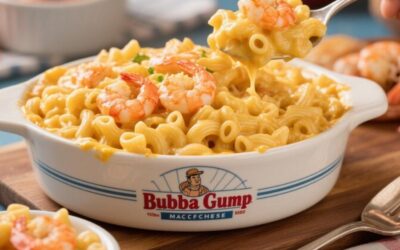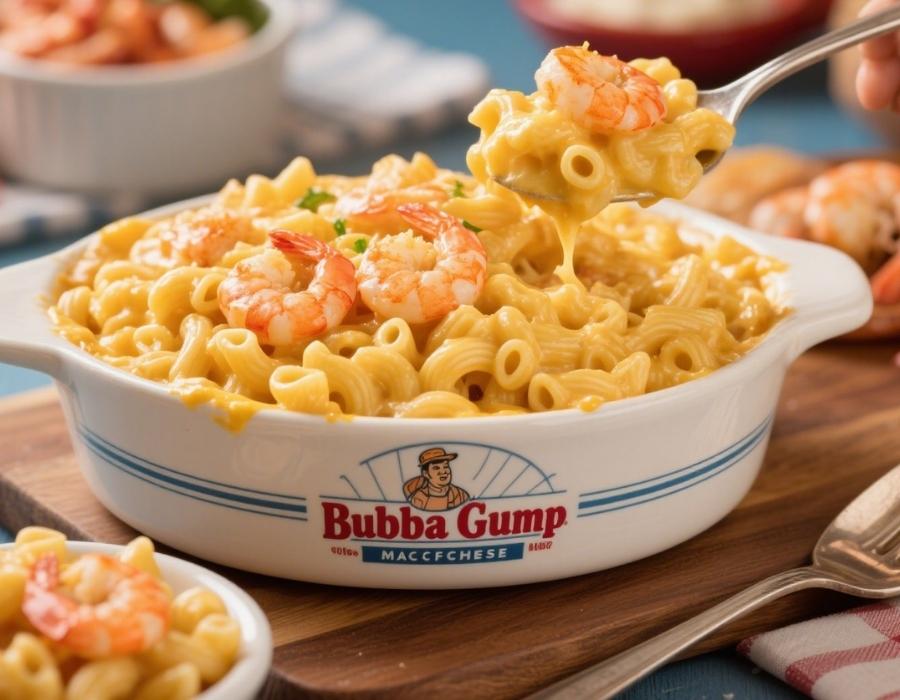There’s something magical about mac and cheese that transforms a simple pasta dish into pure comfort food bliss. When you combine that comfort with the Southern charm and seafood flair of Bubba Gump Shrimp Company, you get a recipe that’s become legendary among fans of the restaurant chain. This isn’t your average boxed mac and cheese—it’s a creamy, indulgent masterpiece that brings the taste of the famous restaurant right to your kitchen.
Whether you’re craving the nostalgic flavors from the Forrest Gump-themed restaurant or simply want to elevate your mac and cheese game, this recipe delivers restaurant-quality results every time. We’ll walk you through each step, share pro tips for achieving that perfect creamy texture, and show you how to customize this dish to make it your own.
The beauty of Bubba Gump’s mac and cheese lies in its rich, velvety cheese sauce and perfectly cooked pasta. Unlike many restaurant copycat recipes that fall short, this version captures the authentic taste and texture that makes the original so memorable.
What Makes Bubba Gump Mac and Cheese Special

Bubba Gump Shrimp Company’s mac and cheese stands out from typical versions because of its incredibly smooth, restaurant-style cheese sauce and generous portion size. The secret lies in creating a proper roux-based cheese sauce rather than simply melting cheese into milk or cream.
The restaurant’s version uses a combination of cheeses that creates depth of flavor while maintaining that signature creamy consistency. The pasta is cooked to the perfect al dente texture, ensuring it holds up well when mixed with the rich sauce.
What sets this recipe apart is the attention to detail in the cheese sauce preparation. Professional kitchens know that the key to preventing grainy or separated cheese sauce is temperature control and the correct ratio of ingredients. This recipe incorporates those professional techniques to ensure your homemade version rivals the restaurant’s original.
Essential Ingredients for Perfect Mac and Cheese
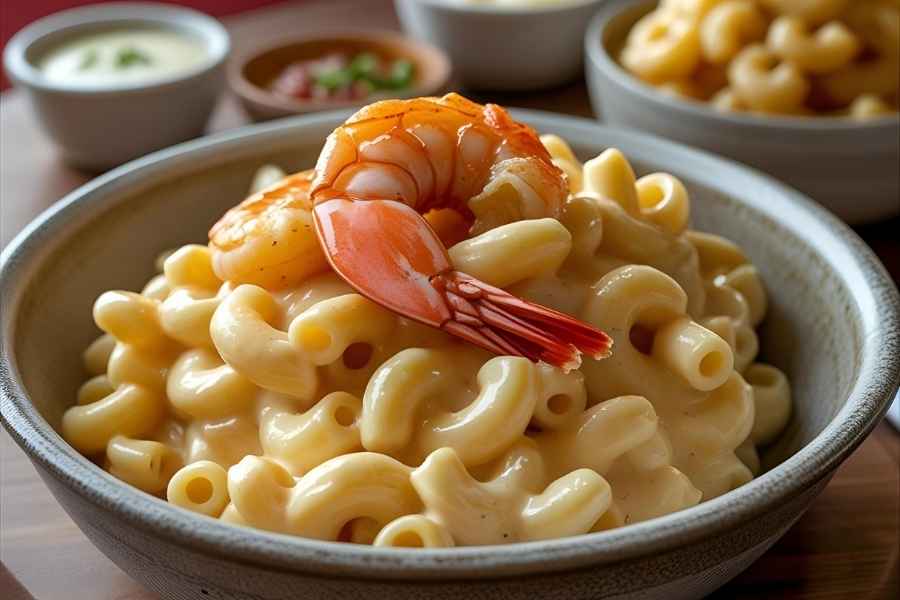
The Pasta Foundation
The pasta choice makes a significant difference in the final dish. Elbow macaroni remains the classic choice for good reason—its curved shape holds the cheese sauce beautifully. However, you can also use cavatappi, shells, or gemelli for interesting texture variations.
Cook your pasta to al dente, which means it should have a slight bite when tested. The pasta will continue cooking slightly when mixed with the hot cheese sauce, so undercooking initially prevents mushy results.
Building the Cheese Blend
The cheese selection is crucial for achieving that authentic Bubba Gump flavor. A combination of sharp cheddar, mild cheddar, and American cheese creates the perfect balance of flavor and meltability. Sharp cheddar provides bold taste, mild cheddar adds depth without overwhelming, and American cheese ensures ultra-smooth melting.
Some recipes benefit from adding a small amount of cream cheese or Velveeta for extra creaminess, though purists prefer sticking to natural cheeses. Freshly grated cheese melts more smoothly than pre-shredded varieties, which contain anti-caking agents that can affect texture.
The Roux Base
Creating a proper roux with butter and flour forms the foundation of your cheese sauce. This mixture thickens the sauce and prevents the cheese from separating. Equal parts butter and flour create the perfect consistency for mac and cheese.
The key is cooking the roux long enough to eliminate the raw flour taste but not so long that it browns significantly. A light blonde color indicates perfect doneness for this application.
Step-by-Step Preparation Method
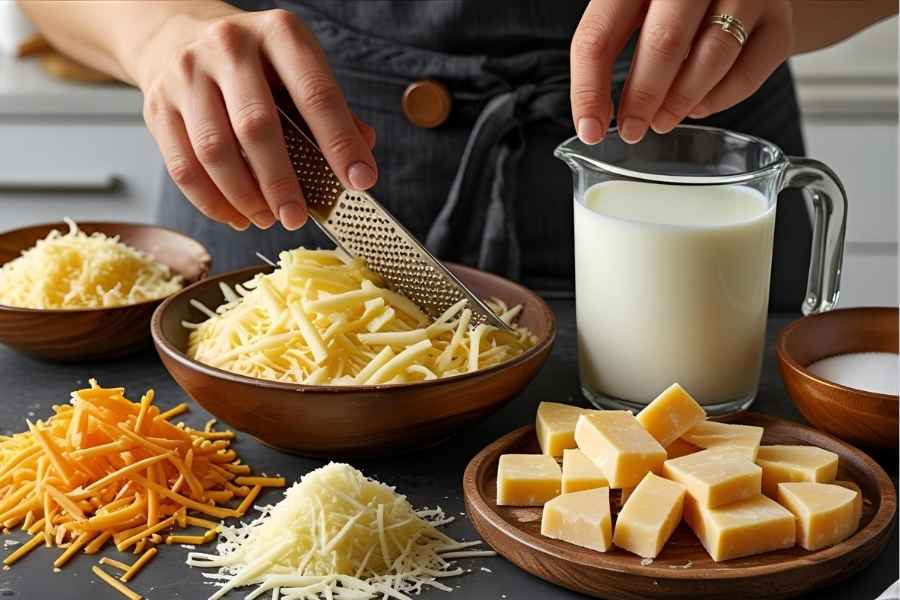
Preparing Your Ingredients
Start by grating all your cheeses and setting them aside at room temperature. Cold cheese doesn’t melt as smoothly, so this step prevents lumps in your final sauce. Measure out your milk and have it ready—whole milk works best for richness, though you can use 2% if preferred.
Bring a large pot of salted water to a boil for the pasta. The water should taste like seawater for correctly seasoned pasta. This seasoning becomes especially important when the pasta absorbs some cooking liquid.
Creating the Perfect Roux
In a heavy-bottomed saucepan, melt butter over medium heat. Once entirely melted and slightly foamy, whisk in flour gradually to prevent lumps. Cook this mixture for 2-3 minutes, whisking constantly to prevent burning.
The roux should smell nutty and look smooth without any lumps. If lumps form, whisk vigorously or strain the mixture before proceeding to the next step.
Building the Cheese Sauce
Gradually add milk to the roux, whisking constantly to prevent lumps. Start with just a splash, whisking until smooth, then gradually add the rest. This technique, called tempering, prevents the mixture from seizing up.
Continue cooking while whisking until the mixture thickens enough to coat the back of a spoon. This typically takes 5-7 minutes over medium heat. The sauce should be smooth and creamy at this point.
Remove the pan from the heat before adding cheese. Add cheese in small handfuls, whisking each addition until completely melted before adding more. This gradual process ensures smooth incorporation without overheating the cheese.
Combining Pasta and Sauce
Drain the cooked pasta thoroughly, but don’t rinse it—the residual starch helps the sauce adhere better. Add the hot pasta directly to the cheese sauce and fold gently to combine.
The pasta should be completely coated with sauce, with a little extra sauce visible. The mixture will continue to thicken as it cools, so don’t worry if it seems slightly loose initially.
Pro Tips for Restaurant-Quality Results
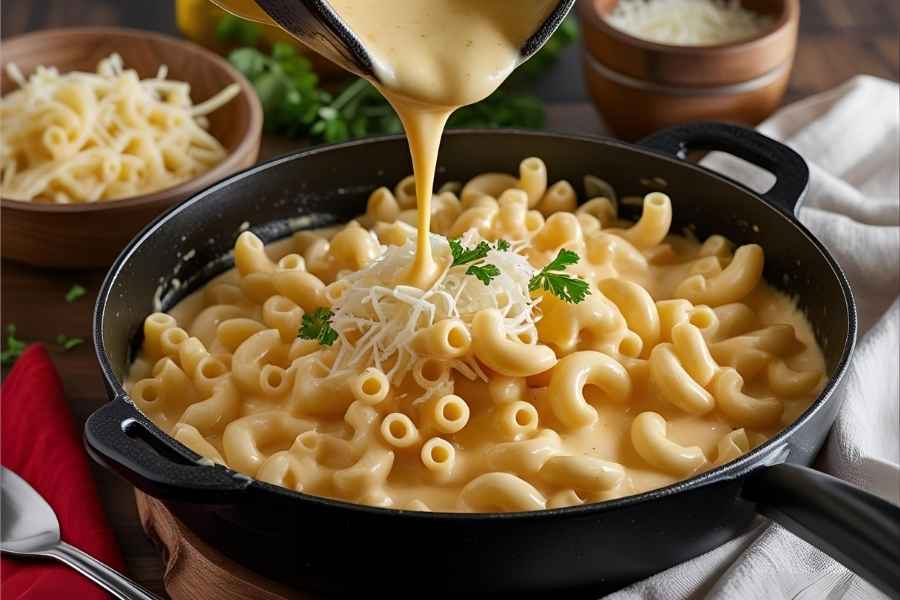
Temperature Control Mastery
Temperature control separates good mac and cheese from great mac and cheese. Never let your cheese sauce come to a full boil after adding the cheese, as this can cause separation. Keep the heat at medium or lower throughout the process.
If your sauce does separate, remove it from the heat immediately and whisk in a tablespoon of cold milk or cream. Sometimes this can save an overheated sauce, though prevention is always better than correction.
Seasoning Like a Professional
Proper seasoning elevates homemade mac and cheese to restaurant standards. Salt the pasta water generously, but also season your cheese sauce. A pinch of white pepper adds heat without black specks, while a dash of paprika contributes subtle smokiness.
Some cooks add a small amount of dry mustard powder or garlic powder to enhance the cheese flavor without overpowering the dish. Nutmeg, used sparingly, adds depth to cream-based sauces.
Achieving the Perfect Consistency
The ideal mac and cheese consistency should be creamy and flowing when hot, but not soupy. As the dish cools, it will firm up considerably. If you’re planning to bake the mac and cheese or serve it later, make the sauce slightly thinner than you think it should be.
For extra richness, some recipes benefit from stirring in a beaten egg yolk at the end. This technique, borrowed from carbonara preparation, adds silkiness and helps bind the sauce.
Delicious Variations and Add-Ins
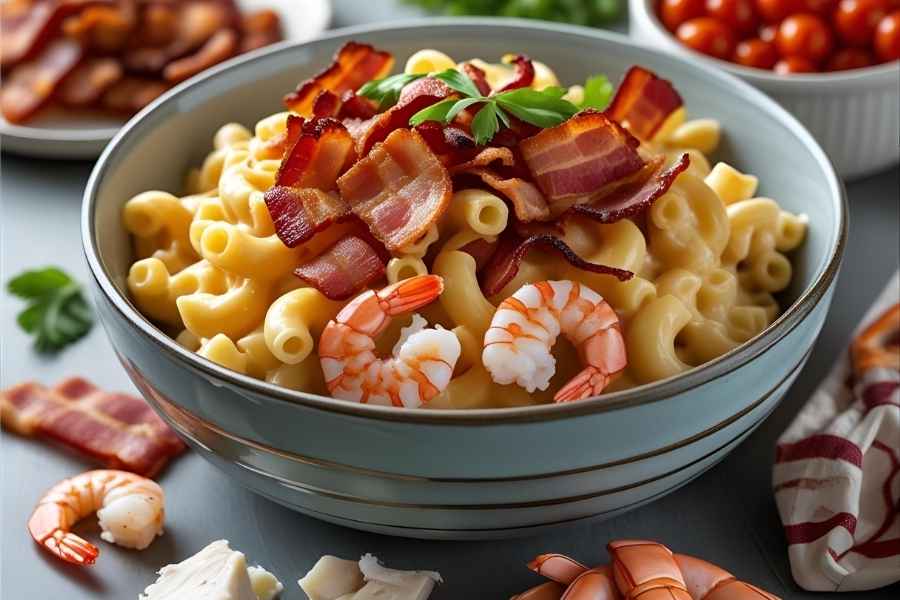
Protein Additions
Transform your mac and cheese into a complete meal by adding proteins. Crispy bacon pieces, diced ham, or pulled pork complement the creamy cheese perfectly. For a Bubba Gump twist, consider adding cooked shrimp, crab meat, or lobster chunks.
When adding proteins, fold them in gently at the end to prevent breaking up delicate items like shrimp or crab. Pre-cook all proteins completely before adding to ensure food safety.
Vegetable Enhancements
Roasted vegetables add color, nutrition, and flavor complexity to basic mac and cheese. Broccoli florets, roasted bell peppers, or caramelized onions work particularly well. Steam or roast vegetables until tender before folding them into the finished dish.
For added richness, consider sautéing vegetables in butter before adding them. This extra step enhances their flavor and prevents them from releasing excess moisture into the cheese sauce.
Spice and Heat Options
Customize the heat level with various additions. Diced jalapeños, chipotle peppers in adobo, or hot sauce can add kick without overwhelming the cheese flavor. Buffalo-style mac and cheese, made by adding hot sauce and blue cheese, has become increasingly popular.
For smoky flavor without heat, try adding smoked paprika or a small amount of liquid smoke. These ingredients should be used sparingly—a little goes a long way.
Serving and Storage Suggestions
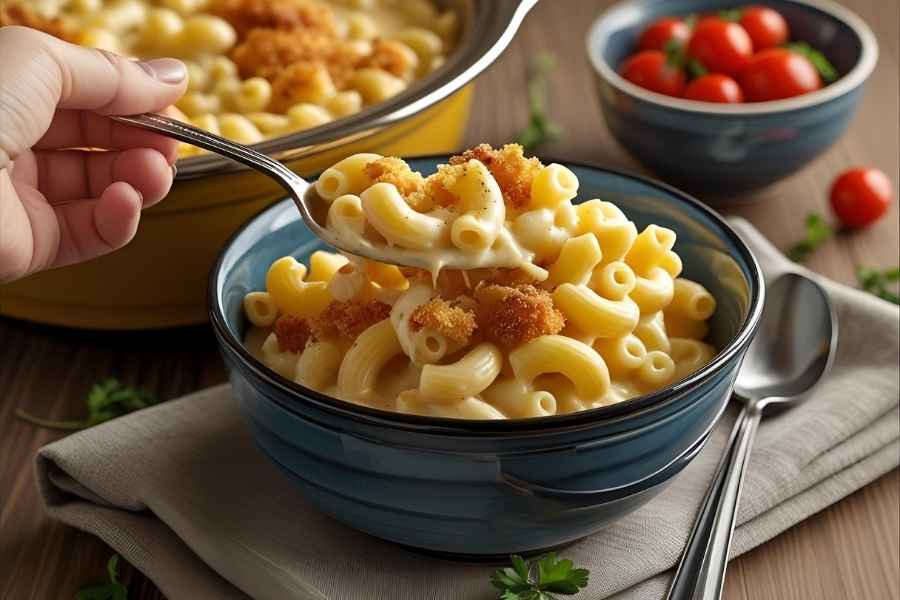
Presentation Tips
Serve mac and cheese immediately while it’s hot and creamy for the best experience. If you must hold it for service, keep it warm in a slow cooker on the lowest setting, stirring occasionally to prevent skin formation.
For special occasions, consider baking the mac and cheese with a breadcrumb topping. Mix panko breadcrumbs with melted butter and herbs, then broil until golden. This adds textural contrast to the creamy interior.
Proper Storage Methods
Leftover mac and cheese keeps in the refrigerator for 3-4 days when stored in airtight containers. The sauce will thicken significantly when cold, which is entirely normal.
To reheat, add a splash of milk or cream and warm gently over low heat, stirring frequently. Microwave reheating works but requires careful attention and frequent stirring to prevent hot spots and separation.
Troubleshooting Common Issues
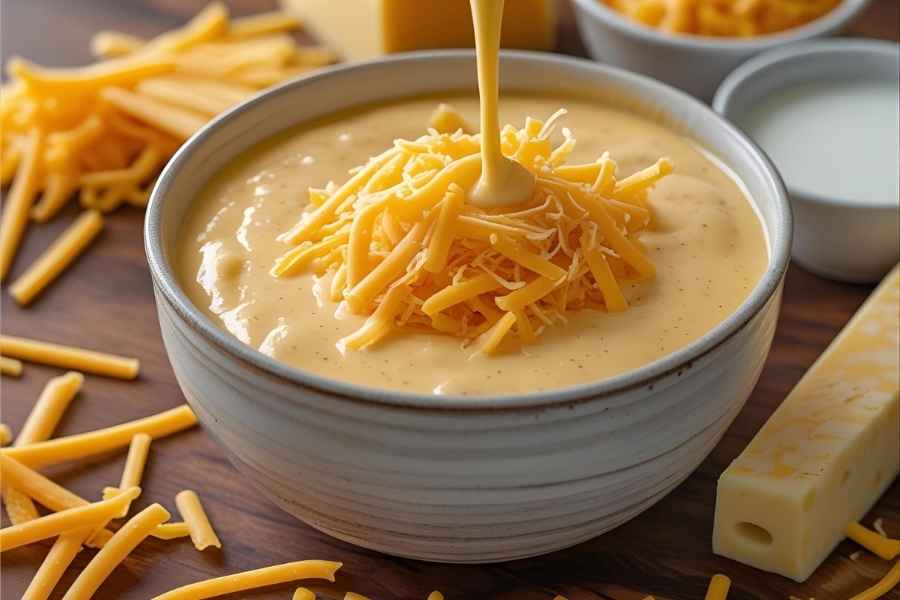
Fixing Grainy Cheese Sauce
Grainy cheese sauce usually results from overheating or using pre-shredded cheese. If your sauce becomes grainy, remove it from the heat immediately and whisk in cold milk, one tablespoon at a time, until smooth.
Prevention is easier than correction. Always remove the sauce from the heat before adding cheese, and add cheese gradually while whisking constantly.
Dealing with Separated Sauce
Separated sauce appears curdled or broken, with visible fat separation. This usually happens from overheating or adding cheese too quickly. Try whisking in cold cream or milk to re-emulsify the sauce.
If whisking doesn’t work, strain the sauce to remove lumps, then whisk the smooth liquid over low heat while gradually adding fresh grated cheese.
Adjusting Consistency Problems
If your mac and cheese turns out too thick, thin it with warm milk added gradually while stirring. If it’s too thin, simmer it gently to reduce excess liquid, or whisk in a small amount of flour mixed with cold milk.
Remember that mac and cheese continues to thicken as it cools, so account for this when adjusting consistency while cooking.
Bringing Restaurant Magic Home
Creating authentic Bubba Gump mac and cheese at home requires attention to detail, quality ingredients, and proper technique. The reward is a dish that captures the comfort and indulgence of the restaurant’s original while allowing you to customize it to your preferences.
The techniques you’ve learned here—building a proper roux, controlling temperature, and gradual cheese incorporation—apply to many other cheese-based dishes. Master these skills, and you’ll be able to create restaurant-quality results in your kitchen consistently.
Don’t be discouraged if your first attempt isn’t perfect. Like many cooking skills, making excellent mac and cheese improves with practice. Each time you make it, you’ll better understand how the ingredients work together and develop your preferences for consistency and flavor.
Start with this base recipe, then experiment with the variations and add-ins that appeal to you. Before long, you’ll have your signature version that rivals any restaurant offering.










